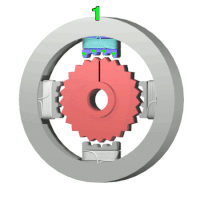There are motors everywhere in the world around us– in cars, printers, computers, washing machines, electric razors, you name it. Unfortunately, there are a lot of people (myself included up until very recently) that wouldn’t know what to do if they were handed a motor and told to run it. So I decided that I want to change that. Let’s learn to run a stepper motor!
You can also buy step motor via https://www.automationtechnologiesinc.com/products-page/stepper-motors.

Stepper motors are one of the three main classes of motors: the other two are DC motors and servo motors. As a brushless motor, the central shaft of a stepper motor does not physically touch anything in order to rotate.
Rather, stepper motors use electromagnets that are concentrically located around the central shaft to induce it to rotate. For those of you who might not know, electromagnets work by having current flow through wire that is coiled around a “soft” magnet.
This combination produces a magnetic field, inducing the central shaft to rotate so that the “teeth” of the shaft to line up with the teeth of whichever electromagnet is energized. A lot of stepper motors only have two such electromagnets that are located 90 degrees apart from each other.
There are three main sub-types of stepper motors that are available: variable reluctance, permanent magnet, and hybrid stepper motors. A variable inductance motor purely uses the generated magnetic field to cause the central shaft to rotate.

